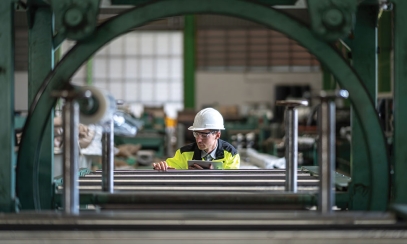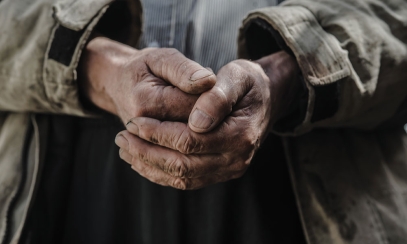Why Do We Have Deacons?
Cardinal Justin Rigali is the archbishop of Philadelphia. He serves on many committees at the Vatican, and attended the Second Vatican Council. FAITH is honored to ask this eminent Catholic churchman and scholar some questions about the Catholic Church in the new millennium.
Q: What are the roles of the deacon and lay ecclesial minister in the church today?
A: Well, the role of the deacon is a restored role that is now exercised by a number of very generous men who have embraced this. It is basically understood, when we go back and read the sixth chapter of the Acts of the Apostles, how it was established. It was established to pitch in for the temporalities, administration and various forms of service the apostles needed a very important group of people to do. And these people were given a special sacrament, which was participation in the sacrament of holy orders. However, like the priesthood, the diaconate is a particular vocation to a specific service.
But, over and above that, we have the laity and their service in the church. And they, too, offer service by virtue of a sacrament. That sacrament is baptism. So, a new understanding from Vatican II of the importance of baptism has led us to a new understanding of the consequences of baptism. The laity are this vast force who actuate, in time and space, in the community of the church, the life of Christ. They live the life of Christ in their own vocations and they serve in the church.
There is another particular role, that of ecclesial minister. An ecclesial minister is a lay person who has a particular job in the employment of the church. They have a particular role, which is extremely useful and helpful.
However, the laity, as a whole, is this great majority of the people; their service is not only the service of lay ministers. Everybody is summoned to service in the church by reason of baptism. And then some people enter into a particular relationship of service and partnership in a parish or diocese, which is over and above. But the dignity of the laity as such comes from baptism and that enables everybody, not only the ecclesial ministers, to perform ecclesial work.
Q: You are on the bishop appointment committee. When a bishop is appointed, how involved is the pope? Does he take the recommendation of the committee and the papal nuncio at face value or get actively involved?
A: The pope is very much involved. Does he take recommendations? Oh yes! He takes recommendations, but they are recommendations from many different sources. The whole process for the appointment of a new bishop goes through many processes: in the diocese, in the nunciature, in Rome. It is eventually brought to the Holy Father with all the reflections and input of all of the participants in these processes. Then he makes the final decision. For a number of years, back in 1989-1994, I was the secretary of that congregation. I was the one who, together with the prefect, would take the results of all this to the pope and personally discuss all this with him. And in all this, we count on the help of the Holy Spirit – but with a great deal of human involvement. Although there are many viewpoints and opinions, it is a very worthy procedure. We trust God’s help in all of this, as we trust in it for all the major decisions of our lives, such as choosing a partner or discerning a vocation.
Church of the month:
Hagia Sophia
The power and vitality of the Christian faith have long inspired tremendous works of art on the part of believers. One has only to consider the beauty of many of our principal churches to realize the transcendent beauty of our faith. For example, consider:
Hagia Sophia, Holy Wisdom, is a former patriarchal basilica, a former mosque and now a museum in Istanbul, Turkey. Famous for its massive dome, it is considered one of the greatest surviving examples of Byzantine architecture. It was the largest cathedral in the world and the religious focal point of the Eastern Orthodox Church for nearly 1,000 years.
Origin:
Nothing remains of the first church that was built on this location, known as the Great Church, or Magna Ecclesia. The site of a pagan temple, the church was built by Constantine the Great as a traditional Latin, colonnaded basilica. The church subsequently burned down.
The construction of a second church was ordered by Theodosius II in 405, but it was destroyed during riots in 532. Several marble blocks from this second church have survived to the present day, and they are displayed in the garden of the current (third) church.
The current building was constructed as a church between 532 and 537 AD by order of the Byzantine Emperor Justinian and was the third Church of the Holy Wisdom to occupy the site.
In 1453, the Ottoman Turks conquered Constantinople and converted the building into a mosque. It was converted into a museum in 1935 by the secular Republic of Turkey.
Notable features:
• The Marble Jar – a jar carved from a single block of marble brought from Pergamon during the reign of Sultan Murad III.
• The Imperial Gate – the entrance reserved only for the emperor. Above the portal is a depiction of Christ and Emperor Leo VI the Wise.
• The Loge of the Empress – the location from which the empress and the court ladies would watch the proceedings below. A round, green stone marks the spot where the throne of the empress stood.
Are you a heretic?
A theology professor once remarked that there were no new heresies, just old ones repackaged. To test the truth of this statement, consider this recent real-life scenario and see if you can name the error involved:
What is the meaning of life?
In 1992, the U.S. Supreme Court, in its ruling in Planned Parenthood v Casey, stated: “At the heart of liberty is the right to define one’s own concept of existence, of meaning, of the universe, and of the mystery of human life.”
What is at stake?
God as the creator of, as the purpose for, and as the giver of meaning to life; God as a personal God infinitely concerned and involved in creation and the existence of objective truth.
What is the truth?
Atheistic humanism, deism and relativism can all be found in this statement. It manifests the pride of an atheistic humanism that seeks to take the place of God as the creator and center of life, rather than submitting to be the instrument of God. It almost presupposes the deist belief in a God who creates the world and then leaves it to run on its own like a clockmaker would. It betrays its relativism and subjectivism by asserting that the very meaning of liberty, the universe and life itself will vary depending on the human being defining it (a strangely objective statement of ultimate truth that defies its own assertion of relativism).
Words of wisdom –
can you complete the proverb?
The sacred Scriptures teach us “to get wisdom, to get understanding!” (Proverbs 4:5) Now it is time to put yourself to the test to see how far along you are in this quest by completing this proverb. Remember, no peeking into your Bible!
Many curry favor with a noble, __________________
a. but the friend of the poor man deserts him.
b. all are friends of the one who has something to give.
c. but the rich one answers harshly.
(Answer: a)



